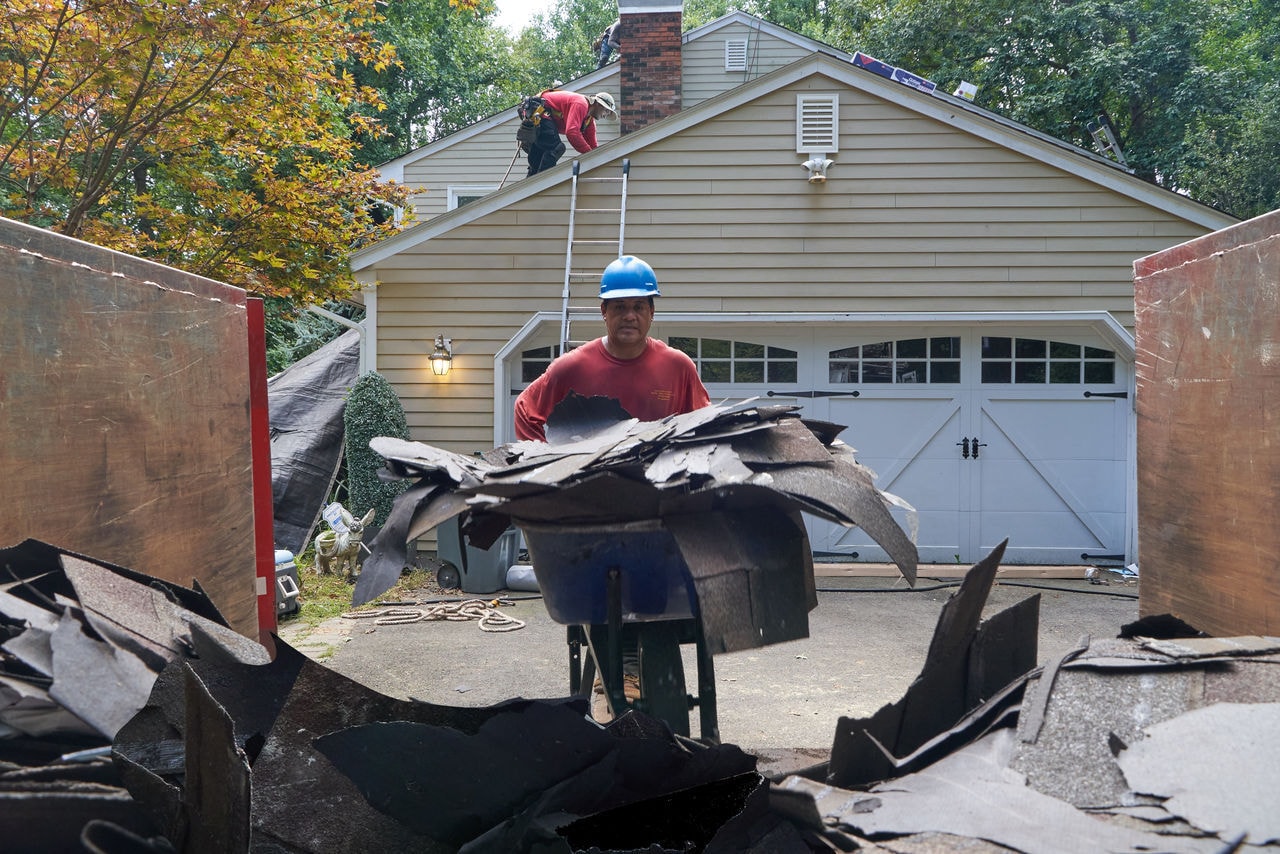Roofing projects can generate a significant amount of waste, making proper disposal essential to keeping the worksite safe and well organized. Renting a roofing dumpster is a practical solution, but choosing the right size is crucial. A dumpster that's too small can potentially lead to overflow issues and costly overage fees due to weight limits.
When in doubt, opting for a larger dumpster is usually the safer choice. However, considering key factors, such as the type of roofing material and the size of the roof, can help you determine the right dumpster size for your project.
What Factors Affect Roofing Dumpster Size?
The total weight of roofing waste is the most important factor when determining the right dumpster size. Exceeding the dumpster's weight limit can result in hefty fees, so it's essential to consider what components affect the total weight.
Roof size directly impacts debris volume—a 1,500-square-foot roof generates significantly less waste than a 3,000-square-foot roof. Material type also plays a role; for example, a 1,500-square-foot slate roof produces significantly heavier debris than an asphalt shingle roof.
The job's scope matters, too. A partial roof repair or replacement generates less waste than a full roof replacement, which may also involve removing a chimney or other structures. Even installing a skylight can add debris to your dumpster, as it may require throwing out drywall or parts of the roof decking.
How to Estimate Debris Weight
When deciding what size dumpster you need for a roofing project, the key factor is the weight of the waste from the materials being removed. Roofing material, roof size, and shingle type all play a role. Three-tab asphalt shingles, for example, generally weigh less than architectural asphalt shingles.
The following general guidelines can help you estimate what size dumpster you need for your project:
- Three-tab asphalt shingles typically produce 2,400 pounds of waste per 1,000 square feet.
- Architectural asphalt shingles typically produce 4,200 pounds of waste per 1,000 square feet.
- Slate shingles typically produce 9,500 pounds of waste per 1,000 square feet.
- Concrete tiles typically produce 11,500 pounds of waste per 1,000 square feet.
Keep in mind that the exact weight depends on the shingle or tile type, thickness, and whether underlayment or other materials are included in the calculation. You can use an online calculator to get more precise estimations of the waste produced and dumpsters needed based on the roofing squares and layers you need to remove.
What Size Dumpster Do I Need for a Roof?
Roofing dumpsters are offered based on the cubic yards of waste they can handle and the weight limit for each.
The standard sizes include the following:
- 10 cubic yards: 2,000–4,000 pounds
- 15 cubic yards: 2,000–4,000 pounds
- 20 cubic yards: 4,000–6,000 pounds
- 30 cubic yards: 6,000–8,000 pounds
- 40 cubic yards: 8,000–10,000 pounds
For example, a 20-yard dumpster is generally suitable for a standard 2,000 square feet of asphalt shingle roof replacement. A 40-yard dumpster can generally handle 4,100 square feet of architectural shingle roof replacement or 1,000 square feet of slate shingles.
Costs of the Wrong Dumpster Size
Underestimating the total weight of a roofing project's waste can be expensive, as many roofing dumpster rental companies charge overage fees ranging from $50 to up to $250 per ton over the limit. In some cases, exceeding the weight limit can end up costing more than the initial dumpster rental itself.
Renting an additional dumpster for a small amount of leftover debris can feel like a waste of money. If you're unsure what size you need, it's often better to choose a slightly larger dumpster than risk overage fees or the need for a second rental.
However, you want to avoid overestimating too much and renting a larger roofing dumpster than you need. Larger dumpsters come at a higher price, and if you rent one for a week or longer, paying for unused space can add up fast. Finding the right balance can help ensure you get the best value for your project.
Dumpster Placement and Usage
When placing a dumpster on the property, choose a location that allows easy access for disposal without affecting your ability to navigate the surrounding area. The driveway is often the best spot, if available, since it's close to the roof and doesn't typically interfere with public areas. While placing it in the yard might seem convenient, a heavy dumpster can cause long-term damage to your customer's grass and nearby landscaping. If you're considering placing it on the street, check local regulations and permit requirements first.
Discuss dumpster placement with the rental company before delivery to ensure it's well-positioned and doesn't impede access to key areas. When loading the dumpster, remember to distribute weight evenly to help prevent tipping. Place heavier materials at the bottom and spread them out to maintain balance.
Choosing the Right-Sized Dumpster for Roofing Projects
Choosing the right roofing dumpster size can help ensure your roofing project remains profitable, avoid unwanted delays, and contribute to overall customer satisfaction. In general, it's best to go with a bigger dumpster rather than a smaller one to avoid overage fees and other charges that can lower your profits.
As a contractor, your reputation is on the line with each project, and even the smallest details can make an impact. GAF provides resources to help make your job easier, supporting each roofing project's success with the right tools, educational materials, programs, and people.

